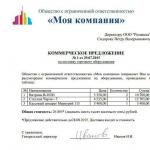Market types. Types of markets in the economy. Market type in Russia
A market in economics is a mechanism of interaction between sellers who provide supply and buyers who provide demand. In the course of this, the level of the equilibrium market price is established. For each product there is a certain marginal level of cost.
Market participants act in their own interests: sellers are interested in selling goods at a price that will provide them with maximum profit, while the buyer, on the contrary, wants to receive at the lowest price and get more benefit from his purchase. Usually the transaction is made at an intermediate option, this is the equilibrium price.
Market structure and types
The structure is characterized by the internal structure of the market, the relationship between individual elements, their share in the total volume. The basis that determines the design is the form of ownership that operates in the economy. It can be public, private, collective or mixed.
The main economic activity of a market economy is the household, business organization and government. The interaction between these elements occurs in all types of market.
Depending on the items for exchange, the following types of markets in the economy are distinguished:
- the market for factors of production;
- market of final goods and services;
- financial market;
- market of intellectual products.
Market of goods and services
The main feature of the consumer market is that the pricing policy on it is formed after the production of products. Unfortunately, this species is most prone to crises.
Market for factors of production
This type includes three more interconnected markets:
- labor market;
- capital market;
- real estate or land use market.
This relationship is characterized by the dependence of supply and demand. Consider a specific example: the level of prices in the labor market has risen, respectively, and the wage rate has risen. As a result, firms increase capital and replace labor that has risen in price.
A distinctive feature of this type of market is the derivative nature of demand. The main goal here is profit, and capital, human resources, land are the conditions necessary for production. Demand, respectively, is generated by the desire of a business or enterprise to get as much profit as possible.
Financial market
This type is very diverse and many-sided. The subject of sale and purchase is invariably money, which is provided for use in various forms.
The types of financial markets are classified in several ways:

In such a market, securities, precious metals and foreign currencies are exchanged.
Types of financial markets:
- Currency market.
- Gold market.
- capital market.
- Money market.
- Stocks and bods market.
- Insurance market.
Market of intellectual products
This includes a variety of scientific inventions, innovations or information services. Intellectual markets also include literary works and various forms of art. 
Market types are determined by several criteria.
Geographical position:
- local markets;
- national;
- world market.
Degree of restriction of competition:
- monopolistic;
- olipoly;
- monopsonic;
- free;
- mixed.
By the nature of sales, there are such types of markets in the economy:
- wholesale;
- retail.
Types and types of markets by saturation level:
- equilibrium;
- redundant;
- scarce.
In accordance with the current legislation, the types of world markets are:
- legal;
- illegal (black).
Industry Criteria:
- computer;
- clothing;
- bookstores;
- grocery, etc.
The main types of markets are divided into sub-markets and market segments.
Market segments are parts of the market or consumer groups that are united by the same requirements for a given product or service.
According to the demographic principle, the market is segmented by age, gender, marital status of consumers.
Competition
The basis of competition is free consumer choice, which manifests itself in obtaining the maximum monetary profit. This is the main purpose of the proposal. 
Types of markets, depending on the degree of competition and the nature of pricing, are of four types:
- One in which there is free (pure, perfect) competition.
- Monopoly.
- Oligopolistic.
- Pure monopoly.
It is possible to determine the type of market, taking into account competition, based on the number of sellers and buyers.
Free competition market
In other words, there is pure or perfect competition in such a market. This is the most common type. Its main feature is that there are a large number of sellers (at least forty) and an even greater number of buyers. Prices are set by the market itself, and no seller can overcharge them, otherwise he will deprive himself of customers.
The types of markets with free competition are characterized by the homogeneity of the goods offered: products, clothing, metals, etc. These must be the same or interchangeable products. 
Pricing policy is based on the analysis of supply and demand, no firm can significantly affect pricing.
Today, the types and types of markets with pure or free competition are stock exchanges, fairs and city markets or bazaars.
Monopolistic competition market
The next largest type of market. Here there are from ten to forty sellers. The main difference is the pricing policy: it fluctuates in a fairly wide range. The offered goods differ from each other and are not always interchangeable.

Pricing occurs in a competitive environment of organizations that produce similar but interchangeable goods. Each enterprise has specific features of production, which allows them to independently set prices for their own products. In this regard, in some way they are monopolists.
This includes the following types of products: soft drinks (juices, mineral waters), tobacco products, alcoholic beverages, confectionery, medicines, clothes and shoes with company logos, household chemicals, sporting goods, plumbing, tools, equipment, etc.
In the modern economic system of the Russian Federation, there are all opportunities for the development of a market with this type of competition and the creation of a sphere of competitive prices.
Oligopolistic competition market
This is a special type, which consists of a small number of large firms that provide the entire market with their products. Typically, the number of enterprises ranges from seven to ten. They can offer both homogeneous and interchangeable goods (ferrous and non-ferrous metals, aluminium, plastics, etc.) and products that differ from each other (electrical engineering, cars, computers, mobile phones).
This type of market is practically closed to newcomers, because it is attended mainly by global brands that have developed over decades. Each seller monitors the pricing of competitors, but often this does not affect his pricing policy. 
On the territory of modern Russia, most industrial products, as well as some types of services, are produced in oligopolistic industries. These are mainly oil producing and processing companies: Lukoil, Rosneft, Onako, Yukos, Tatneft and others. This includes the coal industry, ferrous and non-ferrous metallurgy (aluminum, tin, lead, zinc, etc.), the production of automobiles, electrical engineering, tractors, electric vehicles, and the chemical industry.
Pure monopoly market
This is a special type of market, which consists of only one seller. Often it is a government organization.
A private monopoly firm sets its own high price for its products. It does not focus on other firms, nor on local governments, nor on the administration. The type of market "monopoly" is also independent of any changes in the country's economy.
Organizations do not in all cases ask the highest possible price, they are afraid that the state may regulate pricing policy and attract new enterprises, creating competition in the market, or that they may lose some customers and buyers.
With complete freedom in setting prices, firms are guided by the level of demand, this helps them to optimally price their products.
Types of economic markets do not occur in pure form. Any company has the opportunity to act with several products in different markets.
Situation in Russia
The Russian Federation is characterized by high monopolization of the market. Its level in some sectors of the economy reaches 80-100%. Along with the natural and production monopoly (vehicles, harvesters, etc.), there is also state domination. This leads to the conclusion that the type of market in Russia is monopolistic, but with elements of free competition (for certain types of goods, especially food).
However, all economic processes take place in accordance with the current legislation.
The underdevelopment of market institutions in the Russian Federation is manifested in:
- In relation to property: the development of the shadow economy, the low level of legitimacy of property rights, etc.
- In economic entities: low level of contractual discipline, incomplete process of adaptation to modern market conditions, lack of ownership of all resources.
- In the mechanism of market self-regulation: large administrative barriers, a strong manifestation of monopolism, business oligarchism, a low level of consumer protection, the weakness of the middle class, violations of the function of money.
Market analysis does not provide ready-made solutions for setting pricing policy, but it is needed in order to determine the pattern in pricing, which depends on the balance of supply and demand.
When choosing any pricing strategy, a company or enterprise takes into account the following factors:
- Prices for goods or services are reviewed regularly.
- Most of the products are sold at discounted prices at the end of the season.
- Demand is elastic.
- Buyers are sensitive to prices and "peck" at lower prices.
- When compiling prices, competition, demand, product quality, information about customers are taken into account.
- The types of markets in the economy make it possible to reasonably build an enterprise's pricing policy.
- At least once a quarter, it is necessary to conduct a thorough market analysis and monitor changes in prices from competitors.
- Production costs are regularly calculated.
The market is an extremely complex structure. Its study requires taking into account a huge number of factors and features.





